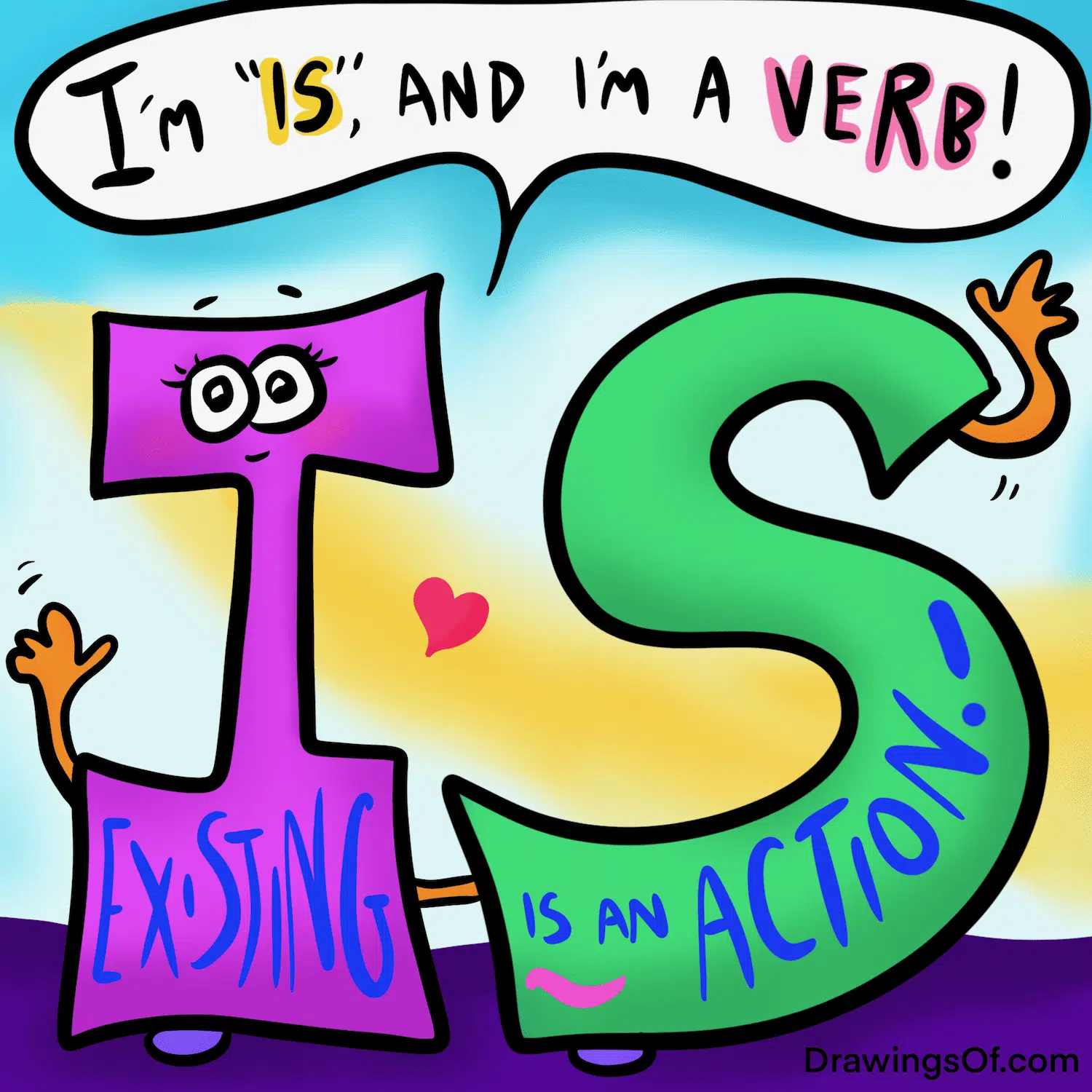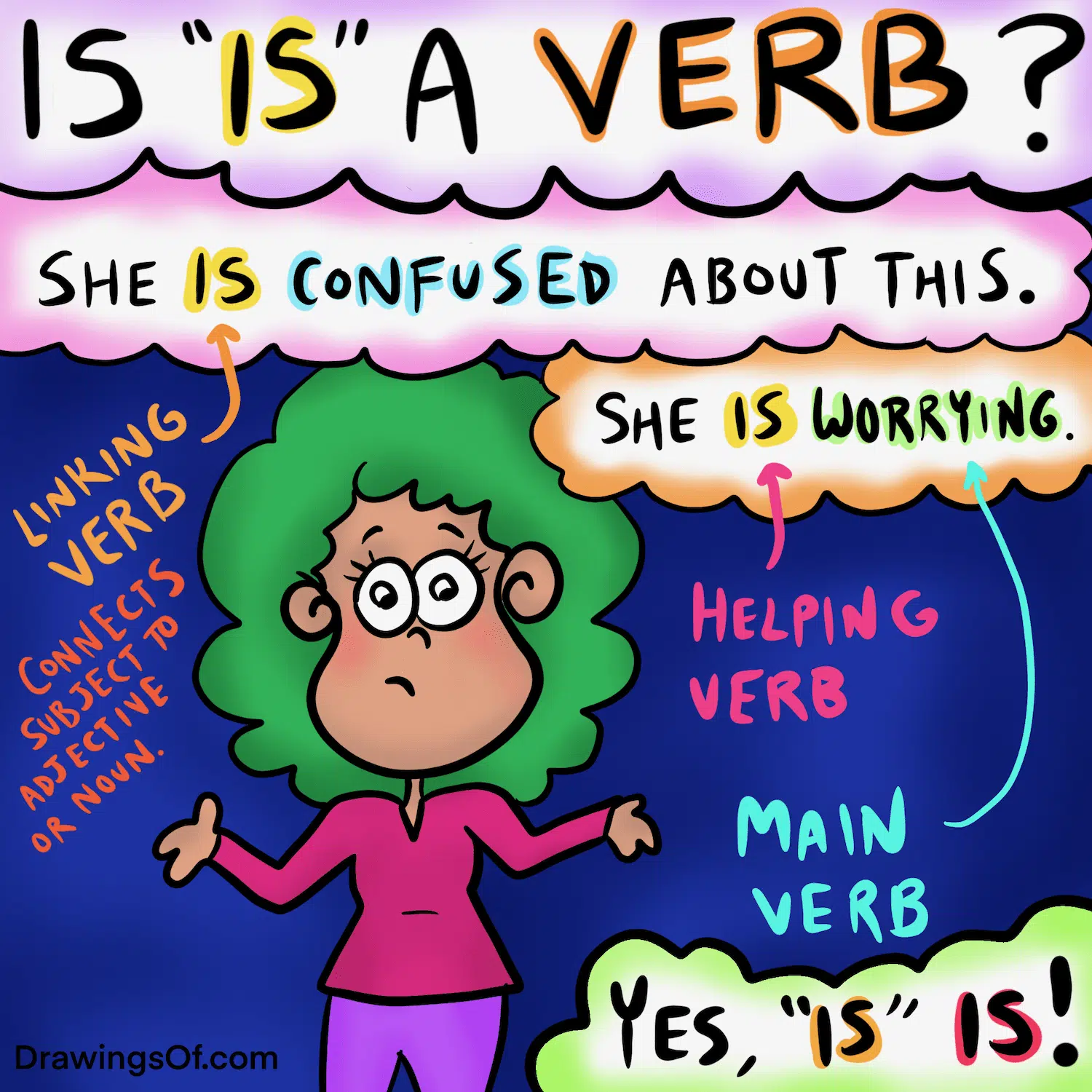Ready for an English lesson that will make your brain tingle? Let’s answer the query: Is “is” a verb? What part of speech is the word “is” anyway? “Is” may consist of only two letters (it’s not one of our hard words to spell), but it’s used so frequently that it’s worth it to understand how it functions, and why.
As background, my name is Lillie and I’ve been an English teacher for 18 years. I am also incidentally an artist, meaning that I’ve hand-illustrated some cute drawings to help this lesson stick. Ok, I’ll keep you in suspense no longer. The answer is…

“Is” Is a Verb!
Yes indeed, the word “is” is the part of speech called a verb! This may seem a bit confusing, however, since verbs are usually described as “action words.” Where exactly is the ACTION in the word “is?”
Think about it this way: existing is a form of action, isn’t it? As context, the word “is” is a third person conjugation of the infinitive verb “To Be,” referring to a state of being. This brings us to a more complex discussion of what KIND of verb “is” is — it can actually be two different types.

As a State of Being or Linking Verb
Sometimes, the type of verb that “is” is is (yes, that is grammatically correct) called a “state of being” (SOB) verb — also known as a “linking verb,” “copular verb,” or “relating verb.” These words are used to connect a subject with an adjective or noun.
For example: She is confused about the definition of the word “foreshadowing.”
In this sentence, the subject (“she”) is linked to the adjective (confused) by the linking or state of being verb, “is.”
Another example: He is an expert in metacognition.
Here, the subject (“he”) is being linked to the noun (“expert”) by the linking verb, “is.”
As a Helping Verb
The second type of verb that “is” can be in called a helping verb — a word that comes before an action verb or linking verb to give more information. For example, in the sentence in my illustration above, “She is worrying,” the word “is” is the helping verb, while “worrying” is the main verb. The former word is adding more information about the time frame (present tense) of the main verb.
VIDEO: What Part of Speech Is “Is?”
Is “Is” a Verb?
I hope this tutorial on “is” has been helpful! Yes, “is” is a verb — and it can either be a linking verb (also called state of being verb), or a helping verb. You can see this in full display in the types of figurative language called similes and metaphors. Now, what English lesson would you like me to illustrate and explain next? Do share!
Want more? Check out my English Language Arts lessons on types of irony, literary devices, tone vs. mood, types of conflict.

The author and artist, Lillie Marshall, is a National Board Certified Teacher of English who has been a public school educator since 2003, and an experienced Reiki practitioner since 2018. All art on this site is original and hand-drawn by Lillie. She launched DrawingsOf.com Educational Cartoons in 2020, building upon the success of her other sites, AroundTheWorldL.com (established 2009), TeachingTraveling.com (founded 2010), and ReikiColors.com. Subscribe to Lillie’s monthly newsletter, and follow @WorldLillie on social media to stay connected!

